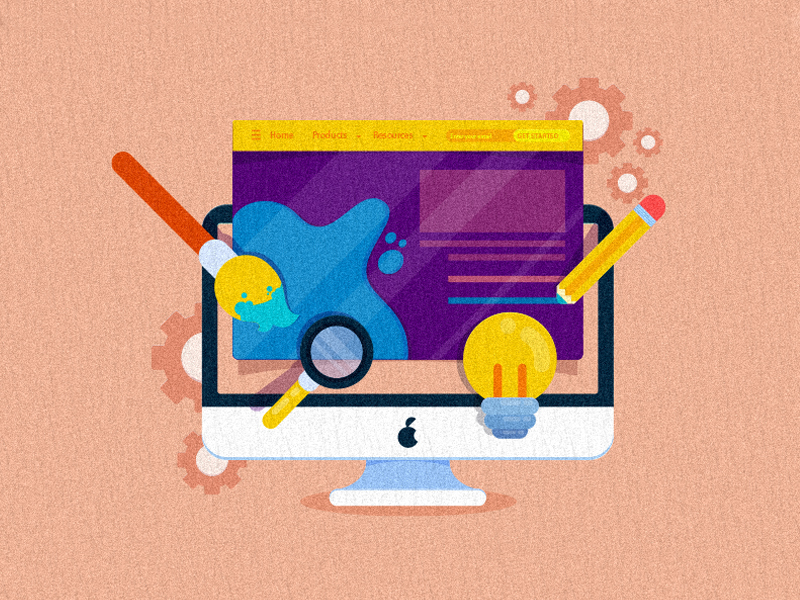Aligned Position Web Design: Boost Your Brand’s Visibility with a Stunning Website
Aligned Position Web Design: Boost Your Brand’s Visibility with a Stunning Website
Blog Article
The Very Best Kinds of Website Design to Enhance Individual Experience and Engagement
In the ever-evolving landscape of digital interaction, the effectiveness of Web layout significantly impacts user experience and engagement. Various style strategies, such as minimal, receptive, and interactive formats, each deal one-of-a-kind benefits that can cater to diverse customer demands.
Minimal Web Style
As electronic landscapes come to be significantly messy, minimalist website design has become a powerful approach to enhancing customer experience. This style philosophy focuses on simplicity, concentrating on essential elements while removing unneeded disturbances. By making use of adequate white area, straightforward navigating, and a restricted color palette, minimal style promotes clearness and guides individual attention to vital material.
The core principle of minimalist website design is to develop a seamless communication for customers. By minimizing cognitive load, individuals can swiftly understand info without feeling overwhelmed. This direct strategy not just improves use however additionally motivates engagement, as visitors are more probable to explore a website that is visually enticing and simple to browse.
Additionally, minimal design frequently stresses typography and images, using these components tactically to convey messages successfully. This concentrate on important parts can improve brand name identity and produce a memorable user experience. In essence, minimal website design is not just a pattern; it is a thoughtful method that identifies the significance of user-centered layout. By stripping away peripheral components, developers can create a much more appealing, reliable, and satisfying Web experience for all users.
Receptive Web Layout
In today's diverse digital environment, responsive website design has actually become important for producing a smooth individual experience throughout a wide variety of tools. As users access sites on mobile phones, tablets, laptops, and desktops, the capacity of an internet site to adjust its design and material to different display dimensions and resolutions is essential.
Responsive Web design utilizes flexible grids, images, and CSS media questions to ensure that Web material exists ideally, no matter of the gadget used. This approach not just boosts the aesthetic charm of a site but additionally dramatically enhances functionality. Users are most likely to engage with a site that provides a consistent experience, as it removes the frustration of needing to zoom in or scroll exceedingly.
By adopting receptive design, organizations can enhance their visibility and reach a more comprehensive audience. In summary, receptive Web design is an essential technique that enhances individual experience, engagement, and general contentment.
Interactive Website Design
Receptive website design lays the foundation for boosting user experience, however interactive Web layout takes this a step even more by involving customers in a more dynamic method - Aligned Position Web Design. By including elements such as animations, clickable models, and real-time responses, interactive website design captivates users, attracting them into a richer browsing experience
This technique not just cultivates interaction yet also encourages users to explore content proactively as opposed to passively consuming it. Methods such as gamification, where individuals make benefits for completing jobs, can dramatically enhance the time invested in a website and boost general contentment. Interactive features can simplify complex information, making it much more delightful and absorbable.
Integrating interactive layout elements can likewise bring about greater conversion rates, as individuals are more probable to involve with a website that proactively involves them. Aligned Position Web Design. Eventually, interactive website design changes customer experiences right into memorable journeys, ensuring that visitors return time after time
Flat Style
Identified by its minimalistic strategy, level layout stresses simplicity and performance, removing unneeded components and concentrating on important functions. This layout viewpoint prioritizes usability, guaranteeing that users can navigate interfaces effortlessly and performance. By using a tidy aesthetic, flat design eliminates the mess typically discovered in much more ornate styles, thereby boosting customer concentrate on content and performance.
The trademark of flat design hinges on its use bold shades, easy typography, and geometric shapes. These elements add to an aesthetically enticing interface that is both friendly and contemporary. Additionally, flat layout cultivates a feeling of clearness, enabling users to recognize important actions and details without diversion.
Additionally, level layout is particularly effective in receptive Web layout, as its simplicity equates well throughout numerous gadgets and display sizes. By focusing on necessary features, flat style not just satisfies individual demands yet also motivates smooth communication, making it a crucial part of effective Web style approaches.
Flexible Web Style
Flexible website design customizes the individual experience by producing several dealt with layouts tailored to different display sizes and tools. Unlike receptive design, which fluidly changes a single design, adaptive style utilizes unique formats for specific breakpoints, making sure optimum discussion on different systems. This technique permits designers to focus on the distinct attributes of each gadget, improving usability by supplying precisely what customers require based upon their context.
One of the primary advantages of flexible website design is its capacity to maximize tons times and performance. By serving tailored web content and pictures that fit the user's device, internet sites can decrease information usage and improve loading rates. This is specifically beneficial for customers with slower links or restricted Visit Your URL data strategies.

Furthermore, flexible design promotes a more constant and regulated branding experience. Since designers develop numerous designs, they can make certain that the visual aspects straighten next page with the brand name's identity across different systems - Aligned Position Web Design. This causes a cohesive user experience, improving involvement and advertising user retention
Conclusion
In final thought, the integration of minimalist, responsive, and interactive Web style concepts significantly enhances user experience and interaction. Minimal layout fosters clarity and focus, while responsive style makes certain adaptability across various devices, promoting ease of access. Interactive style mesmerizes customers via vibrant components, urging expedition and customization. Jointly, these layout comes close to add to the production of user-friendly settings that not just boost contentment yet additionally drive greater conversion prices, emphasizing their crucial significance in contemporary Web layout approaches.

Minimal design fosters quality and emphasis, while receptive layout makes certain adaptability across various devices, promoting availability. Jointly, these style approaches contribute to the creation of straightforward settings that look these up not just boost satisfaction but additionally drive greater conversion prices, highlighting their critical significance in contemporary Web layout methods.
Report this page